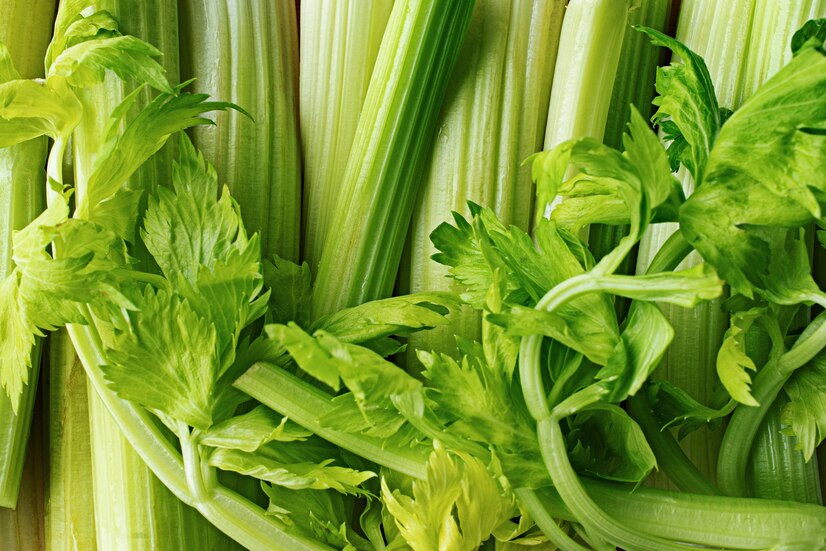We all want the best for our feline friends, but their diet can be tricky to navigate. If you’ve ever caught your cat sniffing around the kitchen, eyeing that crunchy stalk of celery on the counter, you might wonder: is it safe to share? Read Can Cats Eat Chocolate?
Celery is packed with fiber, water, and antioxidants, making it a healthy option for humans. But cats aren’t little humans, and their dietary needs are unique. While celery might seem harmless, is it truly safe or beneficial for your furry friend? Imagine a treat that keeps your cat curious and potentially even offers a few health perks along the way. Celery, in small amounts, might just be a safe, fun option that breaks up the routine—especially if your cat shows interest in its unusual crunch and aroma.
Before you toss a piece to your cat, read on to uncover the benefits, risks, and best ways to introduce celery safely into their diet. Your cat deserves the best, and this quick guide will help you make the right choice. Read Can Cats Drink Milk?
Can Cats Eat Celery?
Celery, known for its vibrant green color and crunchy texture, is a common addition to human diets. But can it fit into a cat’s diet? Cats are obligate carnivores, meaning their diet is primarily meat-based, but small amounts of certain vegetables can be offered as a treat. So, the good news is yes, cats can eat celery—but only in moderation.
Do Cats Like Celery?
Cats are notoriously unpredictable, and their preferences can be as unique as their personalities. Some cats may show an interest in celery because of its crunchy texture, which they may find fun to chew on. Other cats, however, might ignore it altogether. Interestingly, the scent of celery leaves contains lactone sedanolid, which can mimic the effects of catnip for some cats. Though it’s not quite the same as catnip, this aroma might stimulate playful, excitable behavior. Read Can Cats Eat Kale? Is Kale Safe for Cats?
If your cat doesn’t respond positively to celery, that’s okay. It’s essential to respect their preferences and avoid forcing foods they aren’t interested in. Read Can Cats Eat Carrots?
Is Celery Good for Cats?
Celery can be a healthy snack for cats because it:
- Contains lots of water to help keep your cat hydrated
- Has vitamins A, C, and K
- Is low in calories
- Has fiber that can help with digestion
- Provides a different texture that some cats might enjoy
Health Benefits of Celery for Cats
While celery isn’t essential to a cat’s diet, it does offer a few unique health benefits that can complement their regular food:
- Digestive Support
Celery is rich in fiber, which can aid in smooth digestion. For cats that live indoors and don’t have access to whole prey, small amounts of fiber can mimic the effects of natural prey, keeping their digestive tract functioning smoothly. The high water content in celery further promotes regularity and helps prevent constipation. Read Can Cats Eat Garlic? The Risks You Need to Know - Hydration Boost
Since celery is mostly water, it’s a hydrating snack for cats. If you have a cat that doesn’t drink a lot of water, celery can help boost their moisture intake. Proper hydration supports various functions, from digestion to kidney health. - Kidney Function
Celery’s natural diuretic properties can encourage urination, which is beneficial in helping the kidneys filter out waste and excess fluids. This diuretic effect can support kidney health but should be given in moderation to avoid overloading the kidneys. Read Can Cats Eat Peas? - Antioxidant Benefits
Loaded with antioxidants, celery helps combat free radicals, which can cause cellular damage. These antioxidants may support immune health in cats, though the effects are milder than in humans. In small amounts, celery can give cats an antioxidant boost as part of a balanced diet.
Potential Risks of Celery for Cats
As with any treat, it’s essential to be cautious and aware of potential risks. While celery is safe in small portions, larger quantities can lead to digestive upset due to its high fiber content. Here are a few things to watch out for:
- Diarrhea and Indigestion
Overconsumption of celery can lead to diarrhea, bloating, or gas due to its fiber content. Stick to small, manageable portions and keep an eye on your cat’s reaction. - Choking Hazard
Cats have smaller throats, so be sure to cut celery into tiny, bite-sized pieces. Larger chunks can pose a choking risk, especially for smaller or senior cats. Read Can Cats Eat Yogurt? - Possible Allergic Reactions
Although rare, some cats may have allergies to certain vegetables, including celery. If you’re introducing celery for the first time, start with a tiny piece and monitor for any signs of discomfort, itching, or digestive upset. Always consult with your vet if you notice any unusual reactions. Read Can Cats Eat Pepperoni? Why It’s Not Safe For Cats
How Much Celery Can I Give My Cat?
When it comes to feeding celery, moderation is key. Start with a small, bite-sized piece and monitor your cat for any adverse reactions, especially if it’s their first time. If they tolerate it well, you can offer small pieces occasionally, ideally not more than a quarter cup of chopped celery spread out over a week.
Using the 90/10 Rule
To keep treats like celery within healthy limits, follow the 90/10 rule: 90% of your cat’s diet should come from their balanced cat food, and treats (including celery) should make up only 10%. With only about 14 calories per cup, celery is a low-calorie treat that can fit within this guideline easily. Read Can Cats Eat Eggs?
Can Cats Eat Celery with Peanut Butter?
While peanut butter is not toxic to cats, it’s high in fats and often contains added salt, sugar, or xylitol, an artificial sweetener harmful to cats. If you want to share a celery-and-peanut butter treat, use a tiny dab of all-natural, unsalted peanut butter with no xylitol. However, this should only be offered sparingly, as the high fat content can lead to weight gain and digestive issues if given too frequently. Read Can Cats Eat Oranges?
Can Cats Drink Celery Juice?
Celery juice is popular among health enthusiasts, but should your cat be sipping it? While celery juice isn’t toxic to cats, it’s highly concentrated and can be overwhelming for their system. If you’re curious to see if your cat likes it, limit their intake to a teaspoon or so, and avoid making it a regular habit. Celery juice doesn’t provide the same fiber benefits as the whole vegetable, so there’s no added advantage. Read Can Cats Eat Pineapple?
Can Cats Eat Celery Seed?
Celery seeds are known for their medicinal properties in humans and are often used in holistic medicine for inflammation and arthritis relief. However, cats’ systems are more sensitive, and the concentrated compounds in celery seeds could cause adverse effects. Always check with a veterinarian before introducing any seeds or herbal supplements, including celery seeds, into your cat’s diet. Read Can Cats Eat Cherries?
Preparing Celery for Your Cat
If you decide to give celery a try, here are a few tips to make it safe and appealing for your feline friend:
- Wash Thoroughly: Pesticide residues can linger on celery, so wash it well before serving to remove any harmful chemicals.
- Chop Finely: Cut the celery into small, easy-to-chew pieces to reduce the risk of choking and make it easier for your cat to digest.
- Serve Plain: Skip the seasonings, sauces, and dips. Celery should be given plain, as added ingredients can be harmful or too rich for a cat’s sensitive digestive system.
Can Kittens Eat Celery?
Kittens are particularly sensitive to new foods, so it’s generally best to wait until they’re older and have a stable diet before offering treats like celery. Kittens need a diet rich in protein and fat for growth, so celery’s fiber and low-calorie content aren’t particularly beneficial for them. Stick to vet-approved treats and wait until your kitten is fully grown before introducing celery.
Read Can Cats Eat Cheese? and Can Cats Eat Popcorn?
Final Thoughts On Can Cats Eat Celery
Celery can be a safe, crunchy treat for cats when given in moderation. Its fiber, water content, and antioxidants offer small but beneficial health perks, and some cats may even enjoy its unique scent and texture. Just remember to start slow, keep portions small, and consult with your vet if you have any concerns.
Read Further
Dehydration in Cats: Symptoms, Causes, & Treatment
Why Is My Cat Peeing Outside the Litter Box?



